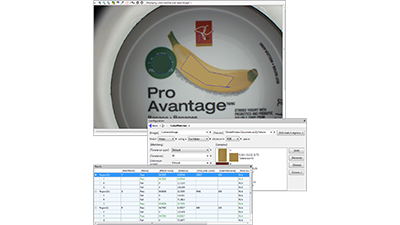Digital cameras with color image sensors are now commonplace. The same is true for the computing power and device interfaces necessary to handle the additional data from color images. What’s more, as users become familiar and comfortable with machine vision technology, they seek to tackle more difficult or previously unsolvable applications. These circumstances combine to make color machine vision an area of mounting interest. Color machine vision poses unique challenges, but it also brings some unique capabilities for manufacturing control and inspection.

The color challenge
Color is the manifestation of light from the visible part of the electromagnetic spectrum. It is perceived by an observer and is therefore subjective – two people may discern a different color from the same object in the same scene. This difference in interpretation also extends to camera systems with their lenses and image sensors. A camera system’s response to color varies not only between different makes and models for its components but also between components of the same make and model. Scene illumination adds further uncertainty by altering a color’s appearance. These subtleties come about from the fact that light emanates with its own color spectrum. Each object in a scene absorbs and reflects (i.e., filters) this spectrum differently and the camera system responds to (i.e., accepts and rejects) the reflected spectrum in its own way. The challenge for color machine vision is to deliver consistent analysis throughout a system’s operation – and between systems performing the same task – while also imitating a human’s ability to discern and interpret colors.
The majority of today’s machine vision systems successfully restrict themselves to grayscale image analysis. In certain instances, however, it is unreliable or even impossible to just depend upon intensity and/or geometric (i.e., shape) information. In these cases, the flexibility of color machine vision software is needed to:
- optimally convert an image from color to monochrome for proper analysis using grayscale machine vision software tools
- calculate the color difference to identify anomalies
- compare the color within a region in an image against color samples to assess if an acceptable match exists or to determine the best match
- segment an image based on color to separate object or features from one another and from the background
Color images contain a greater amount of data to process (i.e., typically three times more) than grayscale images and require more intricate handling. Efficient and optimized algorithms are needed to analyze these images in a reasonable amount of time. This is where Matrox Design Assistant X color analysis tools come to the fore.
Matrox Design Assistant X color analysis steps
Matrox Design Assistant X includes a set of tools to identify parts, products, and items using color, assess quality from color, and isolate features using color.
The ColorMatcher step determines the best matching color from a collection of samples for each region of interest within an image. A color sample can be specified either interactively from an image—with the ability to mask out undesired colors—or using numerical values. A color sample can be a single color or a distribution of colors (i.e., a histogram). The color matching method and the interpretation of color differences can be manually adjusted to suit particular application requirements. The ColorMatcher step can also match each image pixel to color samples to segment the image into appropriate elements for further analysis using other steps such as BlobAnalysis.
The ImageProcessing step includes operations to calculate the color distance and perform color projection. The distance operation reveals the extent of color differences within and between images, while the projection operation enhances color to grayscale image conversion for analysis using other grayscale processing steps.
The color analysis tools included in the Matrox Design Assistant X interactive development environment (and the Matrox Imaging Library (MIL) software development kit) offer the accuracy, robustness, flexibility, and speed to tackle color applications with confidence. The color tools are complemented with a comprehensive set of field‐proven grayscale analysis tools (i.e., pattern recognition, blob analysis, gauging and measurement, ID mark reading, OCR, etc.). Moreover, application development is backed by the Matrox Imaging Vision Squad, a team dedicated to helping developers and integrators with application feasibility, best strategy and even prototyping.



